How to choose a mountain headlamp

Headlamps are probably one of the instruments that have evolved the most over the last few years, decades. During this time they have achieved greater illumination at lower power consumption, longer battery life, smaller and smaller models, more resistant to shocks, humidity or cold, different types of light, different light beams, and even headlamps with intelligent lighting and all kinds of improvements.
From the point of view of sports and outdoor activities, headlamps have completely displaced handheld torches, as they allow you to have your hands free. In addition, we must bear in mind that they are a fundamental part of the basic mountain equipment and we should always carry it with us, even if we plan to return home before dark. In case of accident or loss, the light of the headlamp will help us to be located in the middle of the night.
As we have just mentioned, headlamps have evolved a lot in recent years, thanks on the one hand to new technological advances and to the fact that a multitude of manufacturers have come into play. That is why, in view of the growing market offer and the multiple features they offer and promise, a standard was needed to standardise all these features and allow the end buyer to compare the different models in a clear way.
Lighting standard. ANSI/PLATO FL 1 2019 protocol.
It originated in 2010, when several manufacturers met to set common standards and the first 501c6 standard was approved in the state of Delaware. The big breakthrough came at the end of 2016, when the first ANSI/PLATO FL 1 2016 standard was approved, now revised and named as ANSI/PLATO FL 1 2019. The acronym ANSI stands for American National Standards Institute.
This standard deals with several concepts that will allow us to understand the different characteristics of the headlamps and, more importantly, will allow us to establish a clear comparison between the different brands. So, if you are interested in buying a headlamp, the best thing to do is to familiarise yourself with some of these concepts.
The standard is summarised in 7 icons that we will see below, to which we have added several more concepts that we thought it would be interesting to discuss.
Features to consider when choosing a headlamp.

Luminous flux:
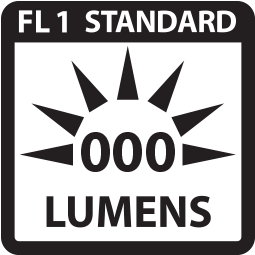
The luminous flux, the amount of light emitted by a source, is the measure of perceived light output and is measured in lumens (lm). The powerThe light output, on the other hand, is a measure of energy consumption, not of light output.
With today's LED technology, it is possible to have a lower wattage torch with a higher light output than a torch with a higher power rating. This is why lumens have become the best method of comparison. However, it is to be expected that higher brightness means higher consumption (power).
As a guideline, headlamps range from about 200 lumens to 1000 lumens for the more "powerful" models.
The vast majority of today's headlamps have different power settings, so that the battery life can be extended when there is less demand for illumination. This was not the case with the older filament bulb models, not so long ago.
LED technology:
Although there have been many advances in lighting over the last few years, probably the most recent one is due to LED (Light Emitting Diode) technology. And although the early LED headlamps lacked "power" this has changed and in terms of the mountain, they have completely replaced halogen bulbs, combined LED-Halogen systems and of course, filament bulbs.
The reason is simple, LED technology is very efficient, with a very long lifetime and low energy consumption. It produces a crisp, bright, flicker-free light and it doesn't heat up and can be manufactured in different colours.
The most cost-effective method of producing white LED light is to combine a blue light diode and a yellow light diode. Some headlamps allow a choice between a bluer (brighter) and a yellower (warmer and more natural) type of light. Direct exposure of blue light to the eyes can cause damage to the retina.
The red light, which is nowadays incorporated in most headlamps, is very useful for use in shelters or in places where people are sleeping, as it is less obtrusive. The flashing option is very useful for calling for help in case of an accident or emergency.
Aperture of the light beam:
Nowadays, many models incorporate the possibility of adjusting the light beam (the light cone). There are some that regulate progressively or in steps, between these two positions:
- Flooding or extensive: ideal for use in close quarters tasks such as packing a backpack, pitching a tent or reading. These beams do not reach very far but illuminate in a broad way.
- Punctual, focused or narrow: This narrower beam allows you to see at a greater distance. Range is gained at the cost of loss of field of view.
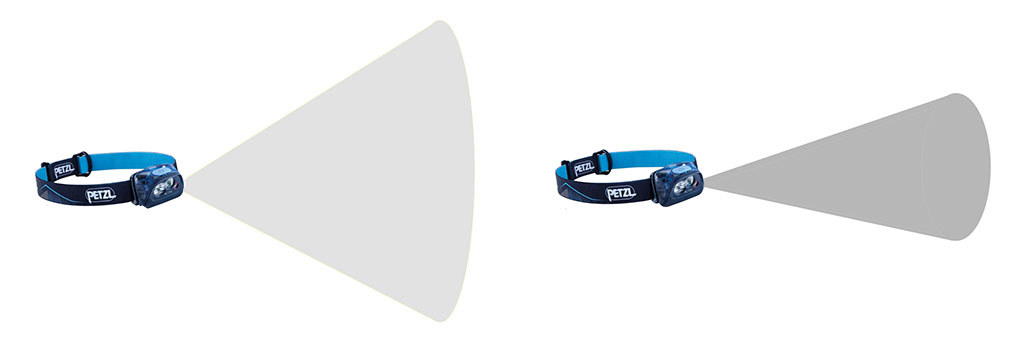
Front-end beam distance
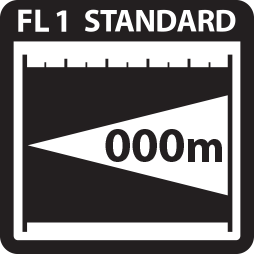
This concept is fully related to the previous ones: luminous flux and beam aperture. It measures the distance in metres at which the illumination is equal to or greater than 0.25 lux (unit of luminous flux on a surface). This light is equivalent, to give an idea, to the light emitted by the full moon on a clear night in an open field.
Beware of headlamps that promise a long distance with low lumens, as they are likely to be a very focused beam with uncomfortable tunnel vision.
Maximum beam intensity
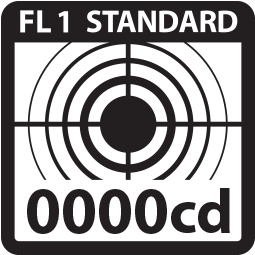
The brightest point of the beam measured in candelas. The candela (cd) is the basic unit of the International System that measures luminous intensity.
Front-end autonomy

Calculated with new batteries, from 30 seconds after switching on the light, until the luminous flux is reduced to 10% of the initial value. The time when most users change batteries.
The autonomy of the headlamp will depend on the power level used. Depending on the different levels of illumination, the manufacturers promise autonomies ranging from approximately 2 hours at maximum power, to 120 hours at the lowest power levels.
Some headlamps allow you to separate the batteries from the headlamp by means of a cable to store them in your rucksack. It protects them from the cold, increasing their autonomy and protects them from the rain.
Types of batteries:
The other factor that influences the range of the headlamp is the capacity of the batteries and is measured in ampere-hours (Ah). Although this is not a characteristic of the headlamp itself, it is important to have some knowledge on this subject as well as to be aware of the environmental problem of recycling. In this respect, it may be preferable to opt for battery-powered headlamps or to use rechargeable batteries. Some allow both options and recharge the battery via USB port.
The autonomy of batteries is shorter than that of disposable batteries because of the way they discharge. Batteries have a more stable illumination over time until they run out "all at once", whereas with batteries, the illumination decays faster but takes longer to run out.
To summarise, the types of batteries are as follows:
- Saline batteries: the cheapest and the shortest lasting. They use zinc chloride and ammonium chloride as electrolyte. They are intended for instruments that do not require a lot of energy, i.e. they are not recommended for headlamps.
- Alkaline: use potassium hydroxide as the electrolyte. They have a longer life than the previous ones and are cheap, but they are highly polluting and not reusable. As they discharge, the brightness of the front light is reduced and they are sensitive to low temperatures. At -17°C their life is shortened by 80 to 90 percent.
- Lithium: high performance (double that of an alkaline) but more expensive. At -17°C they work almost as well as at more normal temperatures and are lighter.
- Rechargeable batteries: have improved a lot. They do not accumulate as much energy as alkaline or lithium batteries, they are more expensive and we will need to buy a charger, but they are rechargeable and in the long run, cheaper and more sustainable. Depending on their composition, there are several types, usually these three:
- Nickel-cadmium (NICD): are becoming less and less visible. Charging capacity is affected if the battery is charged before it is fully discharged (memory effect). Limited lifetime.
- Nickel metal hydride (NIMH): the most common. No memory effect and higher capacity than the previous ones.
- Lithium Ion (Li-Ion) batteries: high quality. High capacity and high discharge resistance. No memory effect.
Impact resistance
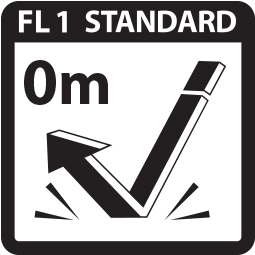
It measures the height in metres at which the front panel can be dropped onto a concrete surface and still function properly. The test is repeated 6 times and must have no visible cracks or breaks and must continue to function correctly. The minimum to receive this rating is 1 metre.
Dust and water resistance (watertightness), IP rating:
Normally in the specifications of headlamps we find the nomenclature IPX followed by a number, which refers to its resistance to water (not any liquid). Only in specific models, such as those intended for caving, two values appear. For example IP67, which means protection 6 against dust and 7 against water, or for example IPX4, which means protection 4 against water. Normally this is the protection that most headlamps have, the minimum protection according to the ANSI/PLATO FL 1 2019 standard to be identified with the following icon and that is done after the impact test.
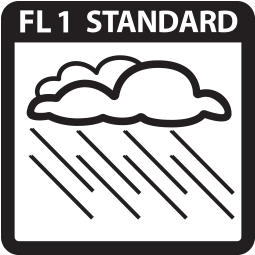
The IPX7, one metre depth in fresh water for 30 minutes is identified by the following icon and is tested after the impact test.
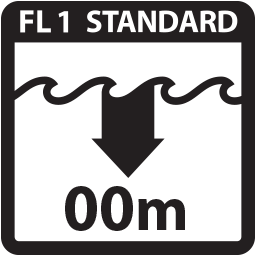
By way of summary.
- Protection against water (0-8):
- IPX3: water sprayed.
- IPX4: splash water.
- IPX5: pressure jet.
- IPX6: high pressure jet.
- IPX7: immersion to a depth of 1 metre for 30 minutes in fresh water.
- IPX8: immersion to a depth of more than one metre within a time defined by the manufacturer, typically up to 3 metres.
- Dust protection (0-6): is not usually specified on most headlamps, except for those intended for activities such as caving, which are usually protected to 6 (full protection).
Weight:
The weight will depend on the different options incorporated, the fastening straps, the power or the autonomy. There are emergency headlamps that weigh from 35 grams to 300 or 400 grams (watertight headlamps, with great light capacity and a long autonomy), although the most common ones for trekking activities weigh around 100 grams.
Intelligent lighting:
Some headlamps instantly and automatically vary the light they emit thanks to a sensor that detects the external luminosity. This type of headlamp is able to adapt the light to the distance of the illuminated object.

Choose a front according to my activity:
Now that we have seen the main characteristics of the headlamps, let's see which one is best suited to the activity we are going to carry out.
Although the different models on the market share some properties in common, we have looked at how the well-known petzl brand organises its products into four types: Classic, Active, Performance and Specialized, in other words, it divides its products according to the requirements of each activity.
Headlamps for everyday activities:
They are compact headlamps (spotlight and batteries together at the front) that provide proximity lighting, so they do not need a lot of power. They are ideal for camping, free time, to have around the house or to always carry with us when we go hiking, as they are usually the lightest and smallest. Within this type we can also include, if desired, emergency headlamps.
Petzl Tikka model: compact headlamp with red light for proximity lighting and short distances with 300 lumens.

Multi-purpose headlamps for outdoor activities:
They are compact like the previous ones but have a higher level of luminosity and incorporate different types of light beam (wider / narrower). They are intended for use in our mountain activities such as: trekking, running, mountaineering, etc.
Petzl Actik model: compact multi-beam headlamp with red illumination and 350 lumens.
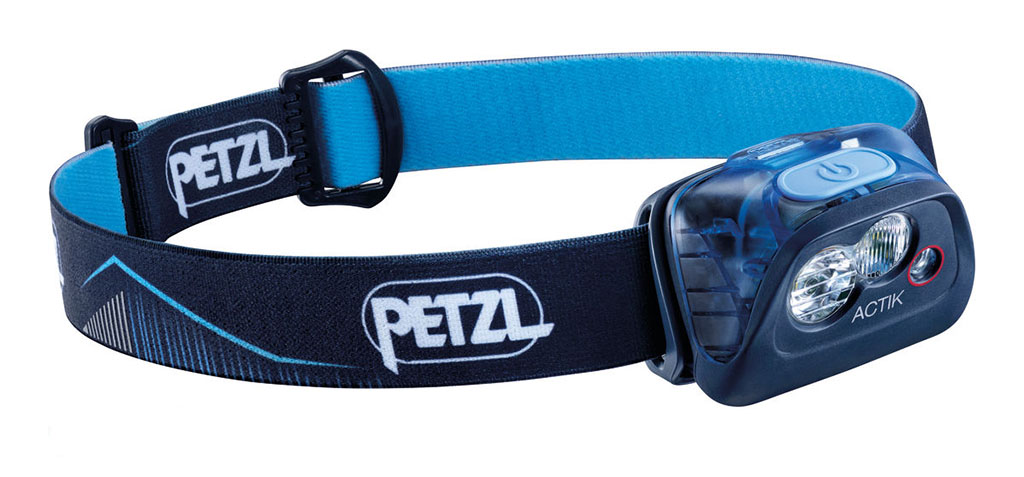
Headlamps for demanding activities:
This type of headlamp, like the older models, separates the spotlight from the power source, which is located at the rear. They are powerful headlamps with multiple light beams and the latest technological advances, such as the ability to intelligently adapt the intensity of the light to the needs of each situation.
Petzl Swift RL model: compact, rechargeable headlamp with Reactive Lighting technology and 900 lumens.
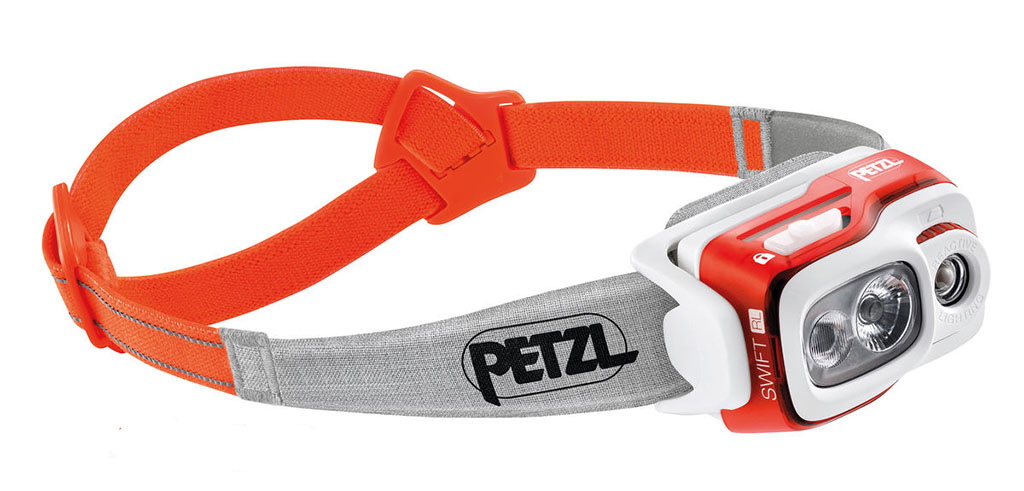
Fronts for special uses:
Headlamps for activities with specific needs such as hunting, fishing or caving, where the degree of resistance to dust and humidity (submersible) must be taken into account. Not to mention explosion-proof torches, when we may find ourselves in a cave with flammable gas.
Petzl DUO S model: 1100 lumen, waterproof, rechargeable headlamp with anti-dazzle function.
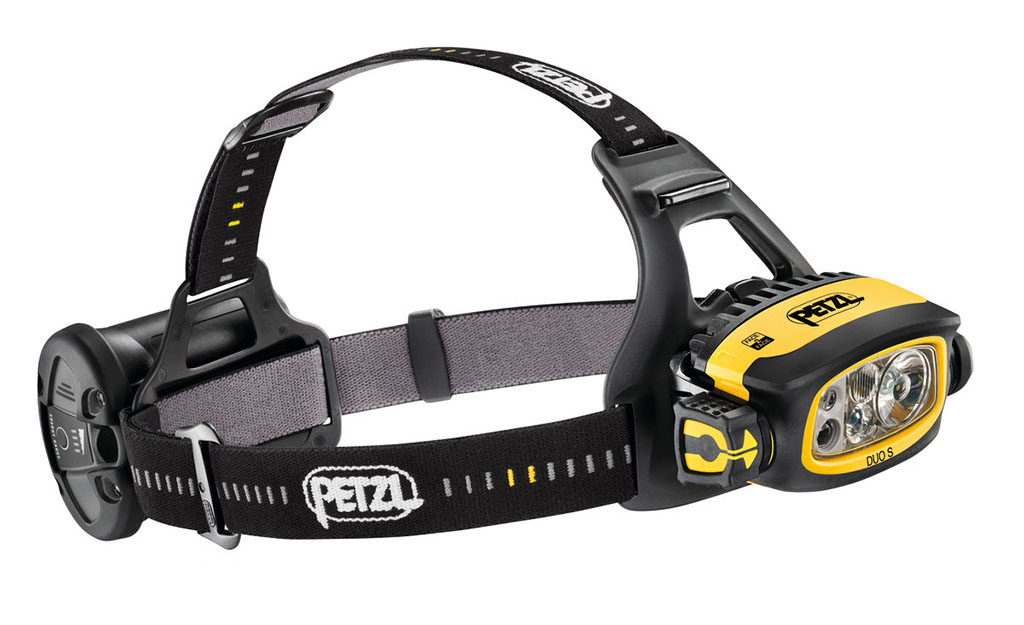
YOU MAY BE INTERESTED IN:
Don't miss any adventure in the Pyrenees!
